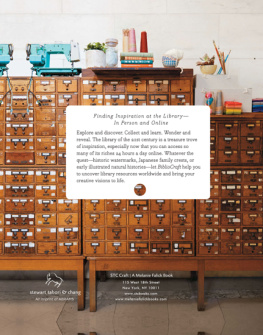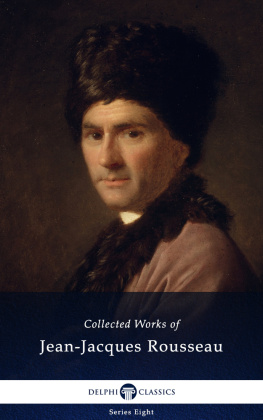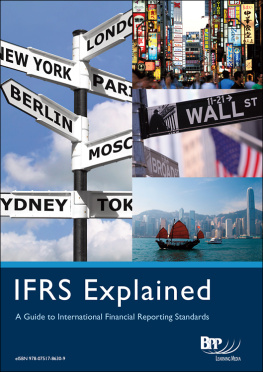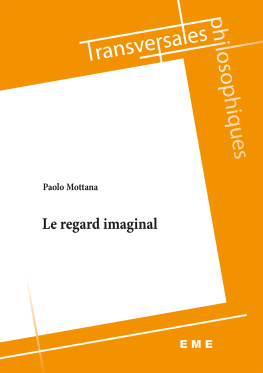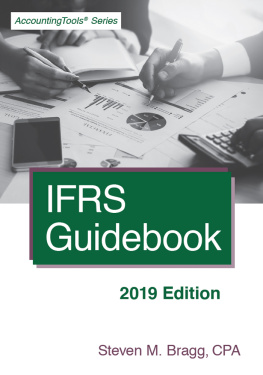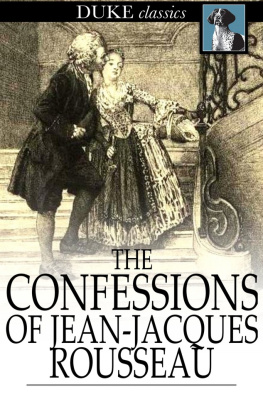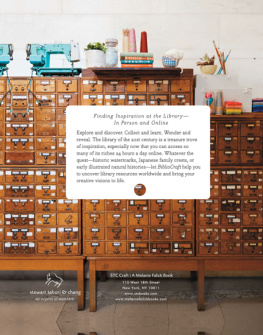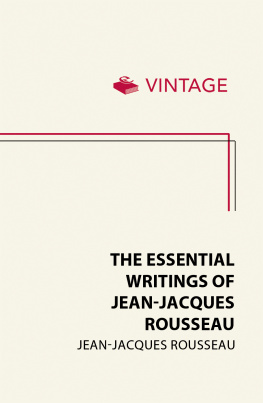


Contents
FOREWORD
ANN THORNTON, Andrew W. Mellon Director, New York Public Library
MARBLED FABRIC POUCH:
JODI KAHN
WATERMARK PILLOWS:
JESSICA PIGZA
ORNAMENTAL PENMANSHIP EMBROIDERY:
MARY CORBET
SECRET MESSAGE SNOWFLAKES PATTERNED STATIONERY SET:
JULIE SCHNEIDER
QUILLED WILLOW PENDANT:
ANN MARTIN
ARTS AND CRAFTS EX LIBRIS SET:
ANNA BONDOC
CROSS-STITCH WALL PANEL:
HALEY PIERSON-COX
KITTEN POCKETS DRESSAND KITTENS!:
HEATHER ROSS AND JESSICA PIGZA
CYANOTYPE THROW:
NATALIE CHANIN
ANTIQUARIAN ANIMAL VOTIVE HOLDERS:
GRACE BONNEY
SOIL PROFILE GROWTH CHART:
LIESL GIBSON
WOOL ROSE FASCINATOR:
GRETCHEN HIRSCH
FELT DOGWOOD BLOSSOMS:
JESSICA PIGZA
CARTOUCHE EMBROIDERY:
REBECCA RINGQUIST
RHUMB LINES WALL HANGING:
JESSICA PIGZA
JAPANESE HERALDRY COASTERS:
MOLLY SCHNICK
PATCHWORK PYRAMIDS:
BRETT BARA
PAPER TOWNS:
SARAH GOLDSCHADT
CUTS OF MEAT TABLE RUNNER:
JESSICA PIGZA
RADISH LOVE TOTE:
JESSICA PIGZA

FOREWORD
Dear Reader,
Libraries at almost any scale are places of inspiration, providing information and entertainment as well as the opportunity to pursue education, self-improvement, creative quests, and new knowledge. The New York Public Library, with its vast collections and the beautiful architecture of its main building, is particularly inspirational. However, the talent, dedication, and expertise of the staff are what excite me most about the Library.
Jessica Pigza is a wonderful example. Her creativity, her passion, and her love of the hunt for information and ideas make her an excellent reference practitioner, and her particular joy in helping others become energized by something they find in the Library is why she wrote this book. In the following pages, Jessica leads readers on a tour of different types of libraries, collections, and other resources that can supply design ideas and motivation for all sorts of curious and creative souls. She also provides a practical guide for examining the contents of the best digital libraries and imparts important tips on the application of library materials beyond personal use.
For both the apprehensive and the eager, this guide to libraries, books, ephemera, and more is as approachable as the librarian behind it. There is plenty of guidance on these pages for learning about new resources and for trying something new. And it is full of projects that illustrate the artistic, imaginative creations that can result when you turn to libraries for discovery. From home goods such as Natalie Chanins cyanotype-inspired throw and Grace Bonneys natural history votive candles to embellishments like Rebecca Ringquists cartouche embroidery and Julie Schneiders wood typepatterned stationery, each project began with an encounter with unique and unexpected library materials. I am delighted by the existence of this wonderful book because of the innovative uses of libraries and collections it is sure to spark. I wont keep you any further from being inspired. See you at the library!
Ann Thornton
ANDREW W. MELLON DIRECTOR
THE NEW YORK PUBLIC LIBRARY

INTRODUCTION
Im lucky to work as a rare book librarian at the New York Public Library, one of the nations largest research libraries, with unparalleled collections of both antiquarian and new books, handwritten documents, maps, vast runs of magazines, and more. On any given day, I might assist a graphic designer who is interested in finding examples of a particular early typeface, or help a childrens book specialist to compare illustrations used in different editions of an iconic childrens story. I might assist in identifying a previous owner of a volume in the librarys collection, based on the bookplate found within the book. Or I might welcome a class of history students from a local college who have come to learn how early printed books were printed, folded, and bound by hand. A big part of what I love about being a rare book librarian is the chance to learn about and discuss the artisanal skills needed to make books during the handpress era. From how paper was made to what sewing stitches were used for bindings to historical ink recipes, Im always curious to learn more.
While I didnt necessarily appreciate early printed books when I was a kid growing up in a small town in western Pennsylvania, I did grow up immersed in a world of crafts of all kinds. My mother made clothes for me and my sister, and my mothers own mother worked in a fabric shop and was a skilled seamstress (among many other things, she made fabulous clothes for my Barbie doll, including a leopard fur cape that I still have). At home I had plenty of chances to dabble in all sorts of crafts, including macram, ceramics, candle-wicking, punched tin, crochet, plastic canvas, cross-stitch, and even cornhusk dollmaking. And Im forever grateful that my mother taught me how to use her sewing machine, because Ive been making my own dresses and skirts for years.
My love for making things by hand has long been tied to books. As a kid I loved poring over pattern catalogs when my mother took my sister and me to the fabric store.

).
And my recollections of paging though my mothers craft books have led me to try to add vintage titles like The Womans Day Book of Soft Toys and Dolls (1975) and The Good Housekeeping New Complete Book of Needlecraft (1971) to my own library at home. In some cases Ive succeeded in persuading her to give me her copies, and in others Ive tracked down and purchased copies for myself. This way, I can remake a favorite afghan or a beloved stuffed hippo whenever Im ready.
Ive always loved poking around at flea markets and used book shops for interesting old arts and crafts publications. Strangely, however, it wasnt until I had been working at the New York Public Library for a few months that it dawned on me that I was basically sitting on top of a craft book gold mine. The fateful day arrived when I was invited to start blogging for the library on whatever topic interested me, and my colleague Rebecca Federman pointed out the obviousthat I should write about crafts. From that day forward, Ive wandered through the stacks, Ive dug around in our catalog, and Ive found vintage patterns, 1920s needlework magazines, Victorian home decorating guides, 1970s DIY books for kids, nineteenth-century type specimen books, and other unique sources of inspiration to share with the curious.
Next page
